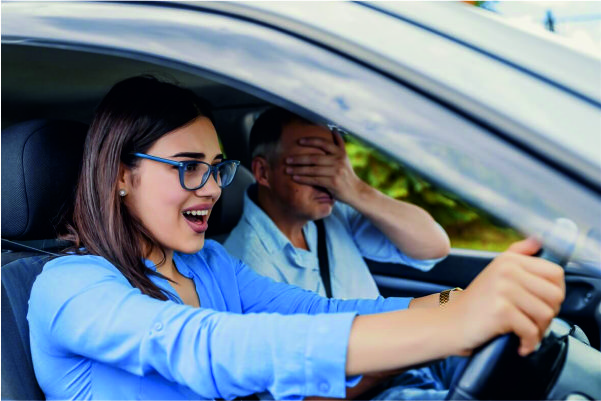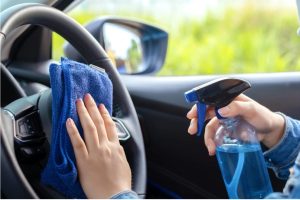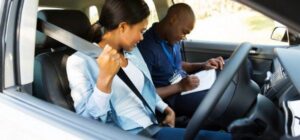Amaxophobia, motorphobia or venophobia is a fear of being in a vehicle, either as a passenger or a driver. This fear of driving or being in a vehicle can have negative impacts on the career and overall lifestyle of a victim.
In this article, we have highlighted the symptoms, causes and treatments of Amaxophobia.
What is Amaxophobia?
To be as plain as possible, amaxophobia is the fear of driving a car, being in a car or both.
Just as fire dreads water, amaxophobia victims dread the thought of sitting in a car, sitting behind the wheels or driving the vehicle. They usually schedule their activities and spend their lives avoiding vehicles as much as they can.
Now, just like other non-physical conditions, amaxophobia victims behave differently from each other, depending on the surrounding circumstances.
For some, they only feel uncomfortable if they’re driving. As long as they’re just passengers, they’ll feel normal just like everyone else.
For some victims, they fear being in a car with a strange driver. As long as the driver is a known person, they’re fine.
For some, they’re afraid of being trapped in a car.
For some (this one is weird), they can drive perfectly well. However, they won’t feel comfortable if someone else is behind the wheel.
For some, they’re unable to think/imagine/remember a car without panicking, sweating, being afraid or feeling uncomfortable in general.
For some (this one is very serious) they can’t feel comfortable if they see a vehicle on TV or in the real world.
There are other variants of Amaxophobia, but the ones above are the most common.
Amaxophobia synonyms: Other names for fear of driving
- Amaxophobia
- Hamaxophobia
- Ochophobia
- Motorphobia
- Venophobia
Symptoms and triggers of Amaxophobia: Driving phobia symptoms
Amaxophobia is a non-physical condition. As a result, the symptoms and triggers may vary based on the individual memories, beliefs and environment of the victim.
Some of them include:
- Nausea
- Heart palpitations
- Trembling or shaking
- Suddenly feeling cold
- Shortness of breath (dyspnea)
- Dizziness and lightheadedness
- Excessive sweating (hyperhidrosis)
- Upset stomach or indigestion (dyspepsia)
What does a person suffering from amaxophobia fear?
Someone afraid of driving a car or being in a vehicle can have many fears and triggers, including but not limited to:
- Driving a car
- Being driven by a stranger
- Being a passenger in a car
- Being trapped, or locked in a car
- Imagining themselves inside a car
- Sighting a car on TV or in the real world
Major Causes of Amaxophobia
Almost all non-physical disorders have causes. From day 1, many factors will contribute to the development of amaxophobia.
#1. Past traumatic experience
Here’s the most common cause of Amaxophobia. Just like many other phobias, motorphobia usually sets in as a result of the victim’s personal life experiences.
This is why someone once injured in a car accident may develop Venophobia.
Someone once trapped overnight or for multiple days in a car by kidnappers may also develop post-traumatic stress disorder (PTSD) for some months after the incident has passed. This may ignite a fear of driving or being a passenger in a car.
In some cases, the unfortunate incident may not occur to the victim directly. For instance, imagine knowing a loved one that owns and drives a yellow car.
Now imagine such a person being in a car accident. He/she is trapped and can’t move out. The car soon catches fire due to collision impact and the person burns right in front of your eyes. You can still remember the person’s screams…
Now in the future, how will you feel if you’re about to enter a yellow car, or if you see a yellow car on TV?
Yes… That feeling… That’s post-traumatic stress disorder (PTSD). Now if you’re required to drive the car or enter it as a passenger and you can’t, then Amaxophobia has set in.
#2. Genetics and family history
According to statistics, having a parent or close relative suffering from a phobia or other type of anxiety disorder increases a person’s risk of also developing that phobia.
This also applies to Amaxophobia. In short, some people are naturally afraid of driving a car or being a passenger in certain conditions. They may not necessarily realize it until they’re much older.
An example is someone buying their first car and feeling somehow uncomfortable. Now that can be due to anxiety, but in some cases, it can develop into Amaxophobia.
#3. Observation and modelling
Of all causes of Motorphobia, this one is the weirdest. The idea is that some victims of Amaxophobia developed it after hearing stories about car accidents or observing others with a similar fear of driving.
Read Also: 7 Common Car Problems in Nigeria and Their Solutions
How do you cure Amaxophobia?
Just like other non-physical and anxiety conditions, no miracle drug or vaccine of some type that can take away Amaxophobia overnight.
However, it can get better or be cured completely with the right amount of time and professional assistance. Here are the common and most-effective treatments for Amaxophobia.
#1. Psychotherapy (Exposure Therapy)
One of the most effective treatments for Amaxophobia and other specific phobias is exposure therapy. The idea is that the human brain is subject to adaptation.
If victims of certain phobias are gradually exposed to their fears while practising relaxation strategies, they will develop a tolerance for it over time.
With time, the fear will begin to reduce and later disappear. Don’t worry, there will be therapists on standby. Amaxophobia will be exposed to their fears in a controlled environment, so everything is simulated.
#2. Medications
Although Venophobia is not a physical disorder, some medications, such as antidepressants and anti-anxiety drugs can be prescribed to help victims with the physical and emotional symptoms of the condition.
#3. Cognitive Behavioral Therapy (CBT)
CBT aims to help amaxophobia victims change the way they sense and respond to situations that trigger symptoms. It is usually applied together with exposure therapy.
#4. Virtual Reality: VR Exposure Therapy
Although still under testing, a small study shows that Virtual Reality Technology can help amaxophobia victims overcome their fears.
Wrapping Up: Amaxophobia the Fear of Driving a Car
Amaxophobia, motorphobia or venophobia can happen to anyone without being realized. It is usually caused by personal life experiences, genetics and in some cases, observation.
The most effective treatments include exposure therapy, prescribed medications and cognitive behavioural therapy.
To round up our article, here are some helpful quotes for people afraid of driving or being a passenger in a vehicle.
- There is no illusion greater than fear.
- To escape fear, you have to go through it, not around it.
- If you are pained by external things, it is not they that disturb you, but your own judgement of them. And it is in your power to wipe out that judgement now. See you at the top!




